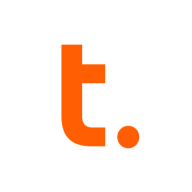

Oracle Data Integrator and Teradata compete in the data integration and analytics category. Oracle Data Integrator seems to have the upper hand due to its advanced integration features and flexibility.
Features: Oracle Data Integrator excels with its re-usable mappings, EL-T architecture, and Knowledge Modules, facilitating connections across diverse technologies like RDBMS and Hadoop. Teradata stands out with its robust analytics capabilities, efficient in-database processing, and specialized analytics for large-scale data environments.
Room for Improvement: Oracle Data Integrator users indicate a steep learning curve and call for better integration with Oracle products alongside improved version control and error handling. Teradata users highlight challenges with OLTP processes and suggest enhancements for Azure Synapse compatibility and unstructured data integration.
Ease of Deployment and Customer Service: Both Oracle Data Integrator and Teradata offer flexible deployment options across on-premises and cloud environments. Oracle users mention difficulties with technical support for multi-technology issues, whereas Teradata faces compatibility challenges with diverse cloud infrastructures.
Pricing and ROI: Oracle Data Integrator is cost-effective compared to solutions like Informatica, although licensing complexity can be a barrier. Despite high costs, Teradata is seen as justified by its performance and reliability in large enterprises. Both solutions demonstrate strong ROI through automation and negotiation strategies are suggested for cost optimization.
We have realized a return on investment, with a reduction of staff from 27 to eight, and our current return on investment is approximately 14%.
The technical support of Oracle is very good; they support the Oracle Data Integrator (ODI) solution effectively.
I can get solutions quickly, and any tickets I submit to Oracle are responded to and resolved rapidly.
The customer support for Teradata has been great.
The technical support from Teradata is quite advanced.
Customer support is very good, rated eight out of ten under our essential agreement.
The scalability and the ability to handle multiple workloads of several parallel ETL jobs could use improvement.
This expansion can occur without incurring downtime or taking systems offline.
Teradata's scalability is great; it's been awesome.
Scalability is complex as you need to purchase a license and coordinate with Teradata for additional disk space and CPU.
In terms of performance stability, I have not experienced any downtimes, crashes, or performance issues with the Oracle Data Integrator (ODI).
The workload management and software maturity provide a reliable system.
I find the stability to be almost a ten out of ten.
Integrating AI with ODI that provides recommendations on how to fix those data quality issues after analyzing and profiling business data would be excellent.
If I use a source system like Oracle and a target system like Teradata, ODI will still run, but it struggles a bit with different infrastructures.
Unlike SQL and Oracle, which have in-built replication capabilities, we don't have similar functionality with Teradata.
If Teradata could provide a list of certified experts, that would be fantastic.
The pricing aspect of Oracle Data Integrator (ODI) is reasonable; it brings significant value to the table.
ODI is cheaper compared to Informatica PowerCenter and IBM DataStage.
Initially, it may seem expensive compared to similar cloud databases, however, it offers significant value in performance, stability, and overall output once in use.
Teradata is much more expensive than SQL, which is well-performed and cheaper.
We spent roughly $295,000 on setup costs.
The main benefits that Oracle Data Integrator (ODI) brings to the table include data quality, data completeness functionality, metadata management, and the reverse engineering feature, which allows integrating the metadata of diversified data sources with a single click.
Oracle Data Integrator (ODI) is powerful and strong if my system uses Oracle components for environments like OLTP, enterprise data warehouse, or data marts.
It has resulted in better performance improvement within our team as we now cover nine business units instead of 18, thanks to the data performance, which has increased data visibility and helped the enterprise achieve a higher rate of internal return on financials.
The data mover is valuable over the last two years as it allows us to achieve data replication to our disaster recovery systems.
| Product | Market Share (%) |
|---|---|
| Oracle Data Integrator (ODI) | 3.5% |
| Teradata | 0.8% |
| Other | 95.7% |


| Company Size | Count |
|---|---|
| Small Business | 25 |
| Midsize Enterprise | 12 |
| Large Enterprise | 43 |
| Company Size | Count |
|---|---|
| Small Business | 26 |
| Midsize Enterprise | 12 |
| Large Enterprise | 49 |
Oracle Data Integrator (ODI) is a data integration software solution that provides a unified infrastructure to streamline data and application integration projects. It uses a powerful design approach to data integration, which separates the declarative rules from the implementation details. The solution is based on a unique ELT (Extract Load Transform) architecture, eliminating the need for a standalone ETL server and proprietary engine.
Oracle Data Integrator Features
ODI has many valuable key features. Some of the most useful ones include:
Oracle Data Integrator Benefits
There are many benefits to implementing ODI. Some of the biggest advantages the solution offers include:
Reviews from Real Users
Below are some reviews and helpful feedback written by PeerSpot users currently using the Oracle Data Integrator (ODI) solution.
Brian D., Business Process and Strategy Specialist Advisor at NTTData, says, “The Knowledge Module (KM) is my favorite feature of ODI. This is where I learned how to use variables to make jobs dynamic. I took that knowledge and created a KM that would go into iTunes and pull the sales of eBooks. Making something that is reusable, like a KM, is important to not only reduce build time but also maintenance in the future.”
Ashok S., Applications Support Manager at a marketing services firm, mentions, "The most valuable features of ODI are the ease of development, you can have a template, and you can onboard transfer very quickly. There's a lot of knowledge modules available that we can use. If you want to connect, for example, a Sibyl, SQL, Oracle, or different products, we don't have to develop them from scratch. They are available, but if it's not, we can go into the marketplace and see if there's a connector there. Having the connector available reduces the amount of hard work needed. We only have to put the inputs and outputs. In some of the products, we use there is already integration available for ODI, which is helpful."
Teradata is a powerful tool for handling substantial data volumes with its parallel processing architecture, supporting both cloud and on-premise environments efficiently. It offers impressive capabilities for fast query processing, data integration, and real-time reporting, making it suitable for diverse industrial applications.
Known for its robust parallel processing capabilities, Teradata effectively manages large datasets and provides adaptable deployment across cloud and on-premise setups. It enhances performance and scalability with features like advanced query tuning, workload management, and strong security. Users appreciate its ease of use and automation features which support real-time data reporting. The optimizer and intelligent partitioning help improve query speed and efficiency, while multi-temperature data management optimizes data handling.
What are the key features of Teradata?In the finance, retail, and government sectors, Teradata is employed for data warehousing, business intelligence, and analytical processing. It handles vast datasets for activities like customer behavior modeling and enterprise data integration. Supporting efficient reporting and analytics, Teradata enhances data storage and processing, whether deployed on-premise or on cloud platforms.
We monitor all Data Integration reviews to prevent fraudulent reviews and keep review quality high. We do not post reviews by company employees or direct competitors. We validate each review for authenticity via cross-reference with LinkedIn, and personal follow-up with the reviewer when necessary.